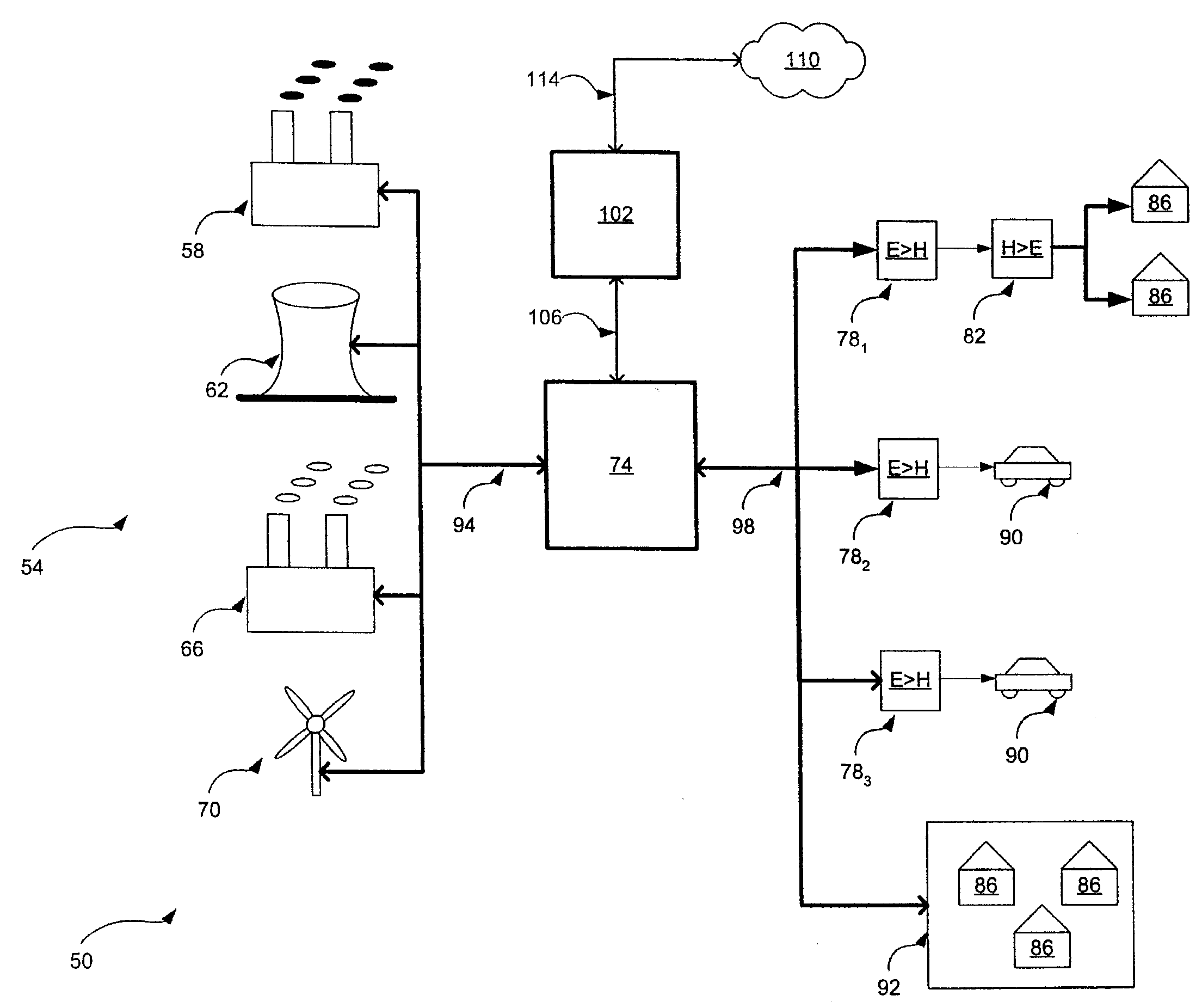Energy network using electrolysers and fuel cells
a fuel cell and electrolyte technology, applied in the direction of fuel cells, ac network voltage adjustment, gas/liquid distribution and storage, etc., can solve the problems of low efficiency of gaseous hydrogen, lack of fuel supply infrastructure, no large-scale pipeline delivery infrastructure for hydrogen, etc., to reduce power levels, reduce emissions, and reduce efficiency
- Summary
- Abstract
- Description
- Claims
- Application Information
AI Technical Summary
Benefits of technology
Problems solved by technology
Method used
Image
Examples
Embodiment Construction
[0082] Referring now to FIG. 1, an energy network is indicated generally at 50. Network 50 includes a plurality of electrical generating stations 54. In a present embodiment, electrical generating stations include a coal power plant 58, a nuclear power plant 62, a natural gas power plant 66, and a wind-farm 70. As will be discussed in greater detail below, each electrical generating station 54 has a profile relating to the amount of energy it can generate, and another profile relating to the environmental pollutants associated with that energy generation.
[0083] Network 50 also includes a power grid 74, which is substantially the same as any conventional electrical power distribution grid, including transmission lines, power stations, transformers, etc. as is currently known or may become known.
[0084] Network 50 also includes a plurality of electrolysers 78, that are connected to grid 74, and which are operable to convert electricity from grid 74 into hydrogen, and store that hydro...
PUM
| Property | Measurement | Unit |
|---|---|---|
| energy | aaaaa | aaaaa |
| electrical | aaaaa | aaaaa |
| pressure | aaaaa | aaaaa |
Abstract
Description
Claims
Application Information
 Login to View More
Login to View More - R&D
- Intellectual Property
- Life Sciences
- Materials
- Tech Scout
- Unparalleled Data Quality
- Higher Quality Content
- 60% Fewer Hallucinations
Browse by: Latest US Patents, China's latest patents, Technical Efficacy Thesaurus, Application Domain, Technology Topic, Popular Technical Reports.
© 2025 PatSnap. All rights reserved.Legal|Privacy policy|Modern Slavery Act Transparency Statement|Sitemap|About US| Contact US: help@patsnap.com



